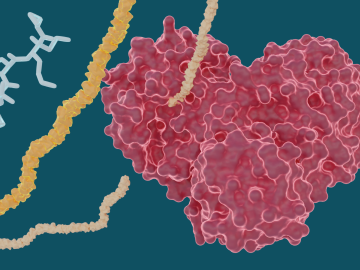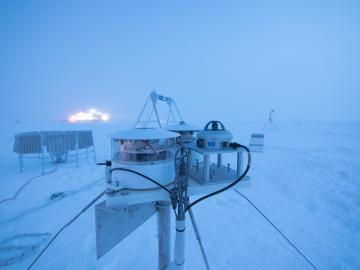
Filter News
Area of Research
- (-) Biology and Environment (86)
- (-) Computer Science (7)
- Advanced Manufacturing (24)
- Biology and Soft Matter (1)
- Building Technologies (3)
- Computational Biology (1)
- Computational Engineering (2)
- Electricity and Smart Grid (3)
- Energy Science (190)
- Energy Sciences (1)
- Fuel Cycle Science and Technology (1)
- Functional Materials for Energy (1)
- Fusion and Fission (30)
- Fusion Energy (11)
- Isotope Development and Production (1)
- Isotopes (4)
- Materials (89)
- Materials for Computing (12)
- Mathematics (1)
- National Security (31)
- Neutron Science (125)
- Nuclear Science and Technology (40)
- Nuclear Systems Modeling, Simulation and Validation (1)
- Quantum information Science (2)
- Sensors and Controls (1)
- Supercomputing (52)
News Topics
- (-) 3-D Printing/Advanced Manufacturing (11)
- (-) Clean Water (11)
- (-) Composites (5)
- (-) Grid (5)
- (-) Machine Learning (13)
- (-) Neutron Science (4)
- (-) Nuclear Energy (1)
- Advanced Reactors (1)
- Artificial Intelligence (15)
- Big Data (14)
- Bioenergy (46)
- Biology (74)
- Biomedical (16)
- Biotechnology (14)
- Buildings (3)
- Chemical Sciences (12)
- Computer Science (34)
- Coronavirus (13)
- Critical Materials (1)
- Cybersecurity (2)
- Energy Storage (9)
- Environment (92)
- Exascale Computing (5)
- Frontier (3)
- Fusion (1)
- High-Performance Computing (22)
- Hydropower (8)
- Isotopes (2)
- Materials (12)
- Materials Science (7)
- Mathematics (4)
- Mercury (7)
- Microscopy (10)
- Molten Salt (1)
- Nanotechnology (7)
- National Security (3)
- Partnerships (6)
- Physics (2)
- Polymers (2)
- Quantum Science (3)
- Security (2)
- Simulation (15)
- Summit (11)
- Transportation (3)
Media Contacts

Paul J. Hanson, ORNL Corporate Fellow, has been elected to the 2020 Class of Fellows of the American Geophysical Union.

Experiments led by researchers at ORNL have determined that several hepatitis C drugs can inhibit the SARS-CoV-2 main protease, a crucial protein enzyme that enables the novel coronavirus to reproduce.

Researchers at Oak Ridge National Laboratory were part of an international team that collected a treasure trove of data measuring precipitation, air particles, cloud patterns and the exchange of energy between the atmosphere and the sea ice.

New capabilities and equipment recently installed at the Department of Energy’s Oak Ridge National Laboratory are bringing a creek right into the lab to advance understanding of mercury pollution and accelerate solutions.

Popular wisdom holds tall, fast-growing trees are best for biomass, but new research by two U.S. Department of Energy national laboratories reveals that is only part of the equation.

In the race to identify solutions to the COVID-19 pandemic, researchers at the Department of Energy’s Oak Ridge National Laboratory are joining the fight by applying expertise in computational science, advanced manufacturing, data science and neutron science.

To better determine the potential energy cost savings among connected homes, researchers at Oak Ridge National Laboratory developed a computer simulation to more accurately compare energy use on similar weather days.

ORNL computer scientist Catherine Schuman returned to her alma mater, Harriman High School, to lead Hour of Code activities and talk to students about her job as a researcher.

Oak Ridge National Laboratory is training next-generation cameras called dynamic vision sensors, or DVS, to interpret live information—a capability that has applications in robotics and could improve autonomous vehicle sensing.
A team of scientists led by Oak Ridge National Laboratory have discovered the specific gene that controls an important symbiotic relationship between plants and soil fungi, and successfully facilitated the symbiosis in a plant that


